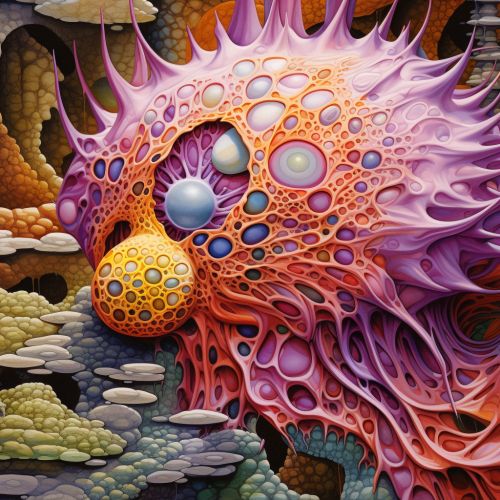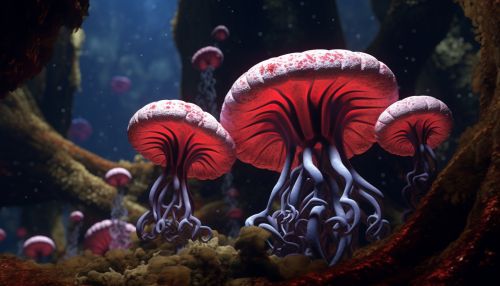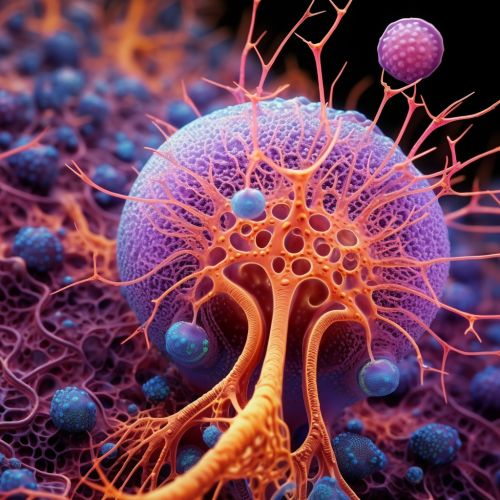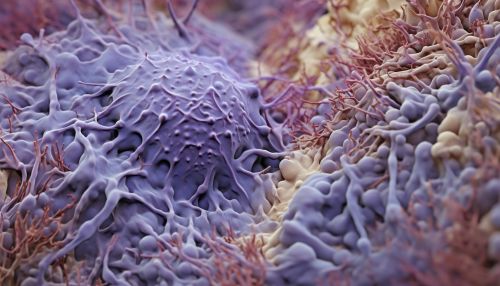Epithalamus
Anatomy and Structure
The epithalamus is a component of the diencephalon, which also includes the thalamus, hypothalamus, and subthalamus. It is located at the posterior end of the diencephalon, superior to the thalamus and anterior to the pineal gland. The epithalamus comprises several structures, including the habenular nuclei, stria medullaris, and the pineal gland.


The habenular nuclei are a pair of small nuclei that relay signals from the limbic system to the midbrain. They are involved in pain processing, reproductive behavior, nutrition, sleep-wake cycles, stress responses, and learning. The stria medullaris is a bundle of nerve fibers that connects the habenular nuclei to the septal nuclei and the limbic system. The pineal gland, also known as the pineal body or epiphysis, is a small endocrine gland that produces and secretes the hormone melatonin, which regulates sleep patterns.
Functions
The epithalamus serves several functions in the body, primarily related to the regulation of sensory and motor pathways, and the control of circadian rhythms.
The habenular nuclei play a crucial role in connecting the forebrain and the midbrain. They receive inputs from the limbic system and basal ganglia, primarily through the stria medullaris. These nuclei process and relay information related to visceral and somatic functions to the midbrain, particularly to the interpeduncular nucleus. This function plays a significant role in the regulation of emotional responses to pain, stress, anxiety, and reward.
The pineal gland is perhaps the most well-known component of the epithalamus. It is responsible for the production and secretion of melatonin, a hormone that regulates the sleep-wake cycle, also known as the circadian rhythm. Melatonin production is influenced by the detection of light and dark by the retina of the eye. During the day, light exposure causes a decrease in melatonin production, promoting wakefulness. Conversely, the absence of light during the night triggers an increase in melatonin production, promoting sleep.


Clinical Significance
Due to its role in various physiological processes, abnormalities or damage to the epithalamus can result in a range of clinical conditions.
Disorders of the pineal gland can lead to sleep disturbances due to the dysregulation of melatonin production. For instance, a pineal gland tumor can cause an overproduction or underproduction of melatonin, leading to insomnia or hypersomnia, respectively.
The habenular nuclei have been implicated in several psychiatric disorders, including depression, schizophrenia, and drug addiction. Dysfunction in these nuclei can result in altered pain perception, mood disorders, and cognitive deficits.
Research and Future Directions
Research on the epithalamus has increased in recent years, particularly focusing on the role of the habenular nuclei in psychiatric disorders and the potential therapeutic targets they present.
Studies have shown that the habenular nuclei are involved in the pathophysiology of depression and addiction, suggesting that these nuclei could be targeted for the treatment of these conditions. Furthermore, the role of the pineal gland in sleep regulation has implications for the treatment of sleep disorders and related conditions.


